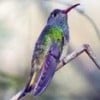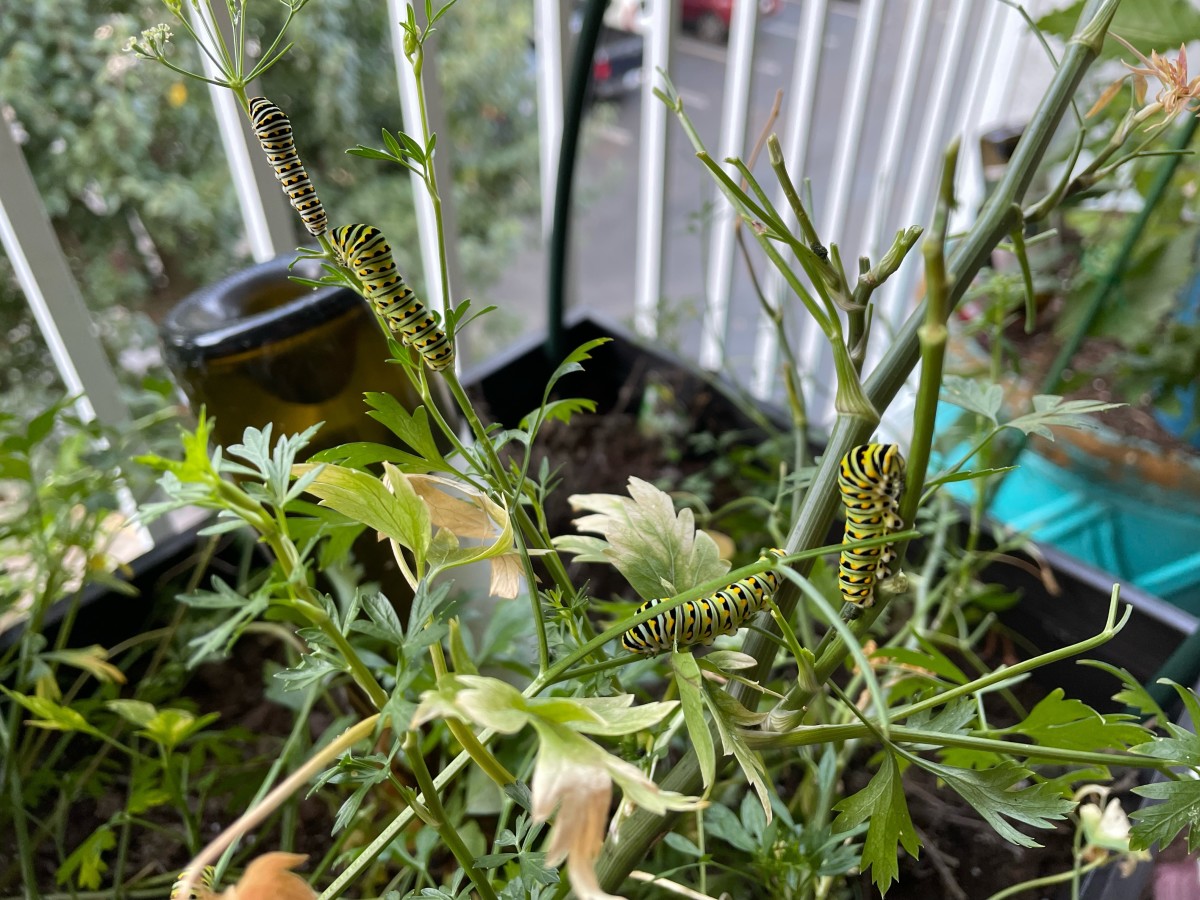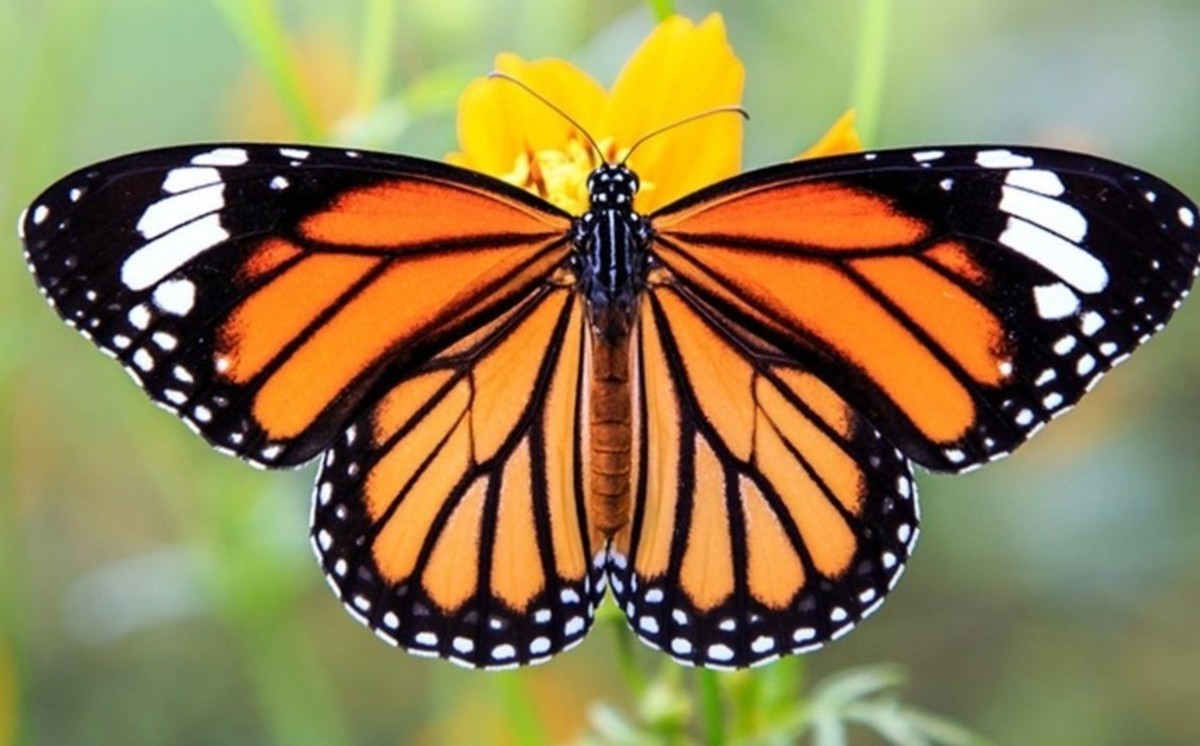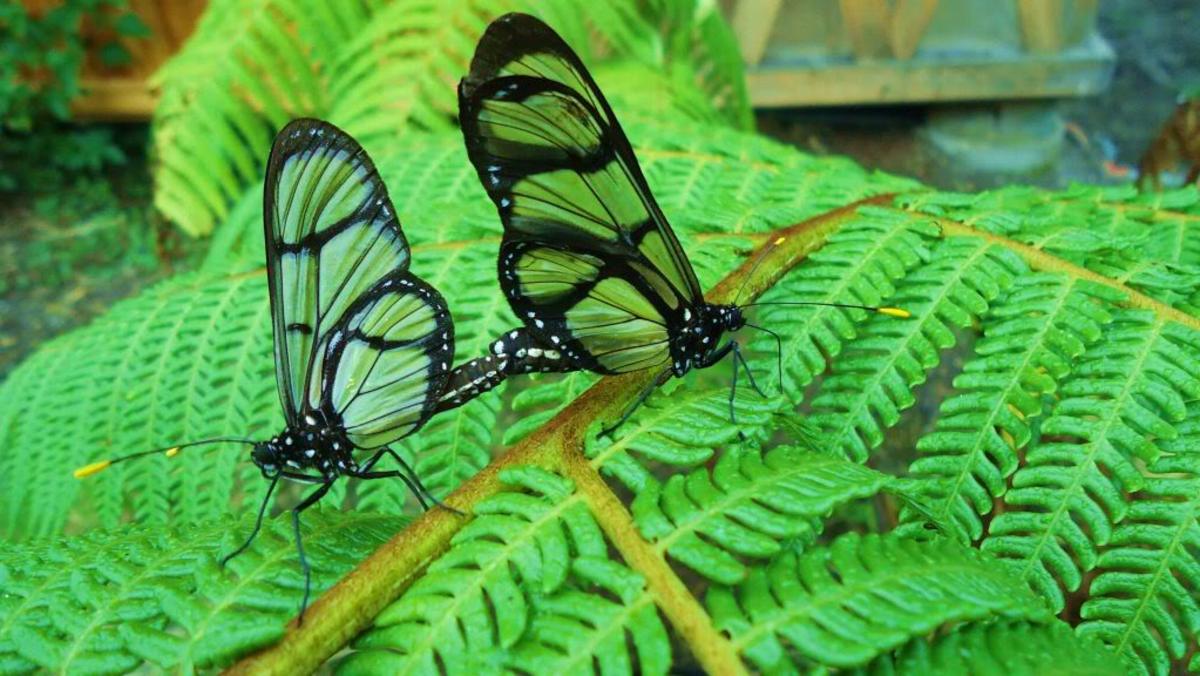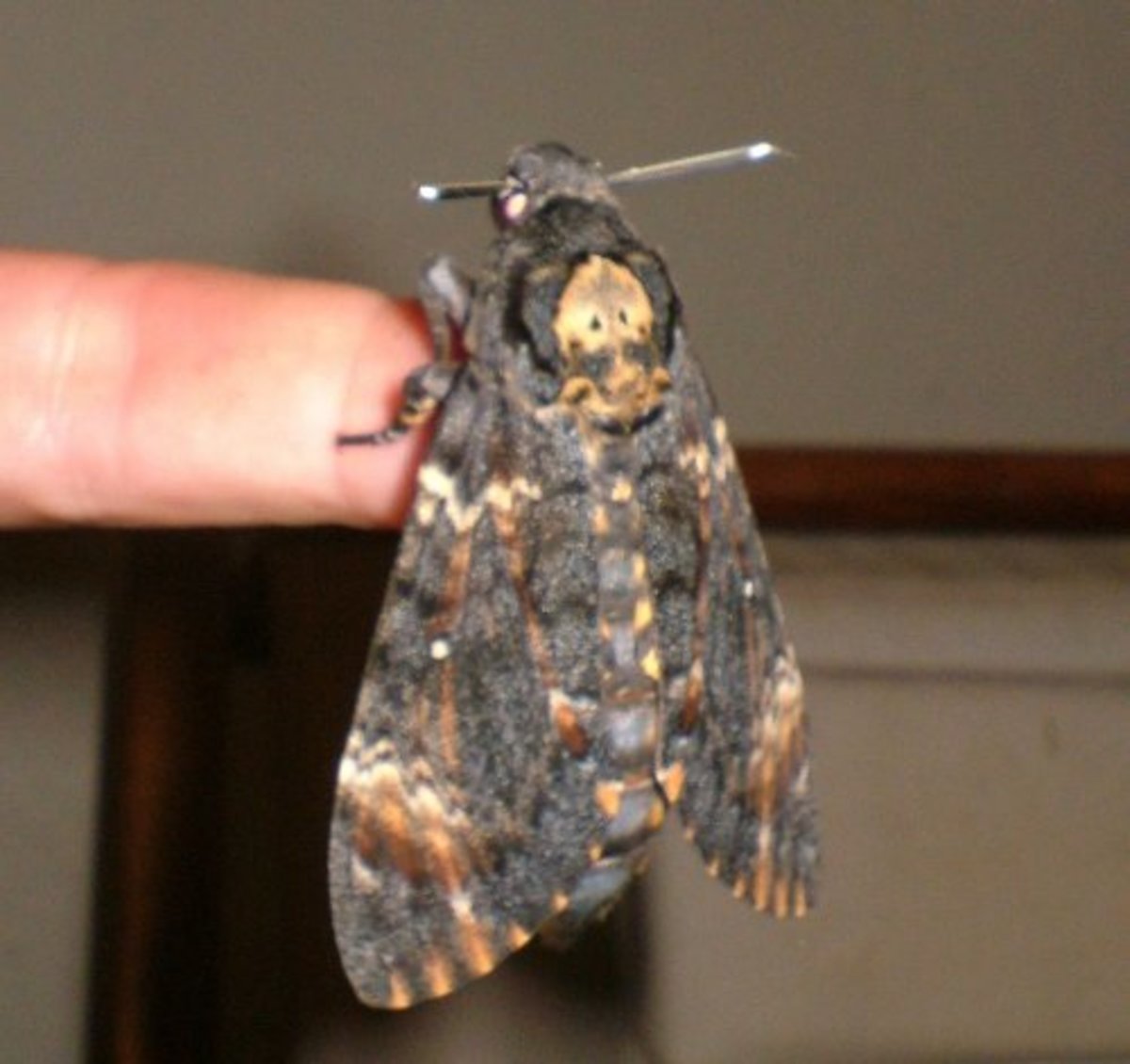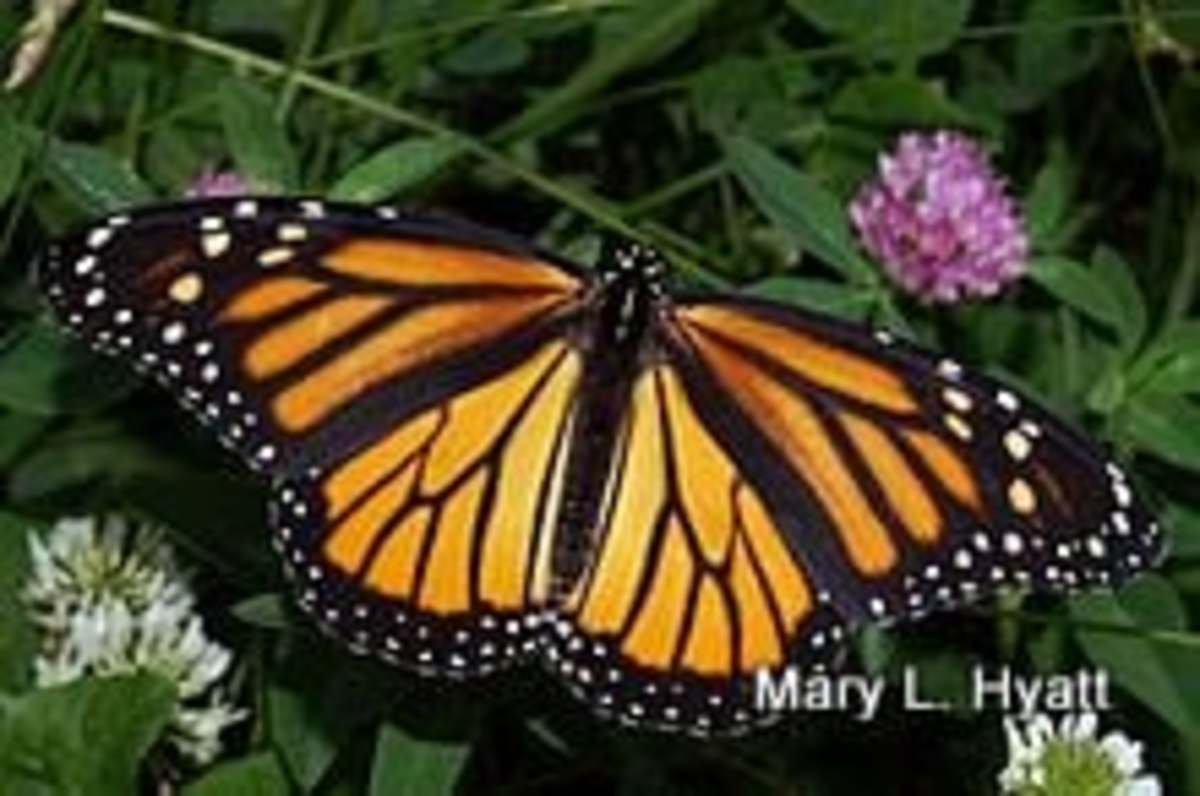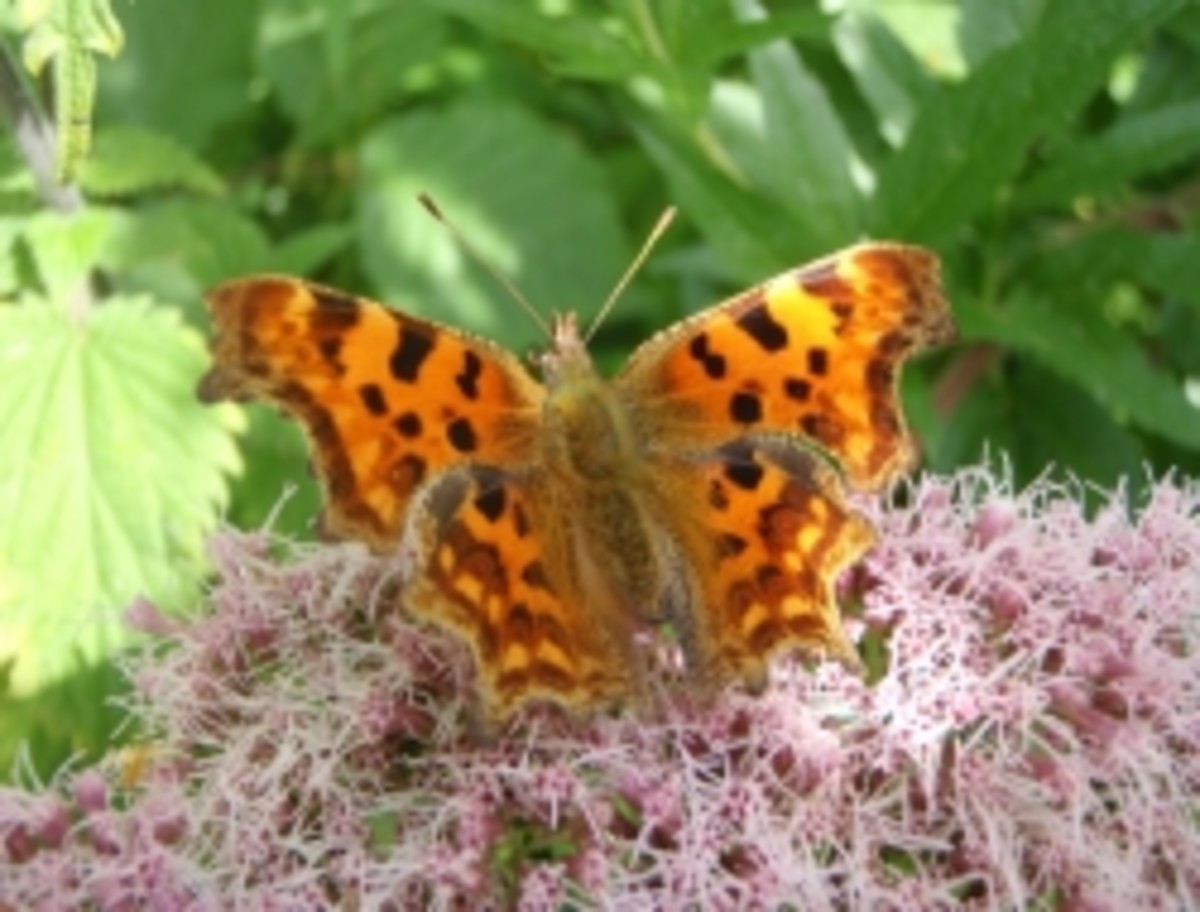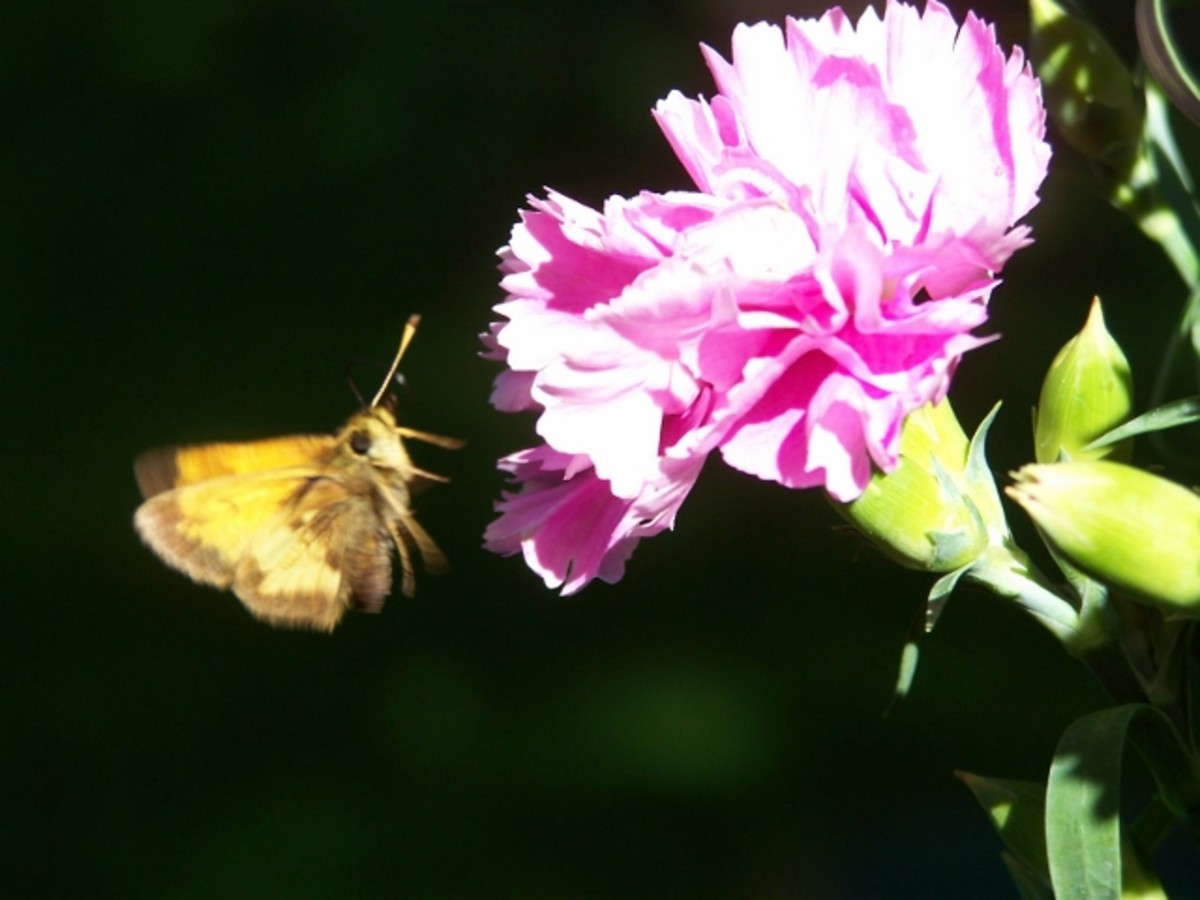- HubPages»
- Education and Science»
- Life Sciences»
- Entomology»
- Insects & Bugs
Butterflies - Black Swallowtail
Black Swallowtail Laying on Bronze Fennel
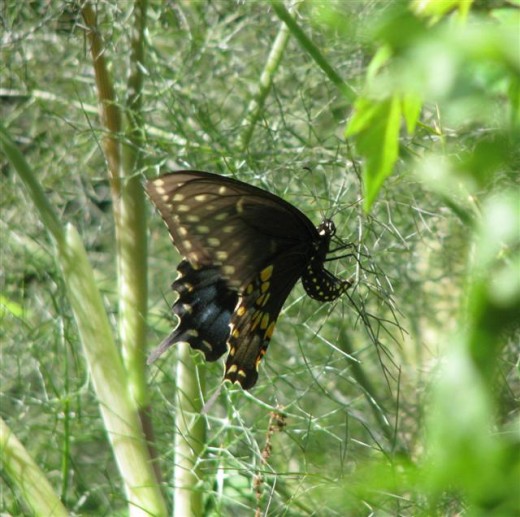
Black Swallowtail (Papilio polyxenes)
The Eastern Black Swallowtail is a common garden butterfly in the south as well as the east and desert southwest. It's larval food plant are both wild and cultivated members of the parsley family including dill and fennel so it can be found where ever there are culinary herbs.
The female Eastern Black Swallowtail is often confused with other blackish swallowtails like the Pipevine and the Spicebush.
Here you will find photographs of some Black Swallowtail butterflies and information about identifying and attracting Eastern Black Swallowtail butterflies. Photos of the stages of the life cycle of this butterfly are also included.
The study of the life cycle of the butterfly and observing nature is an excellent topic of study for children, whether home school or in the classroom.
Eastern Black Swallowtail
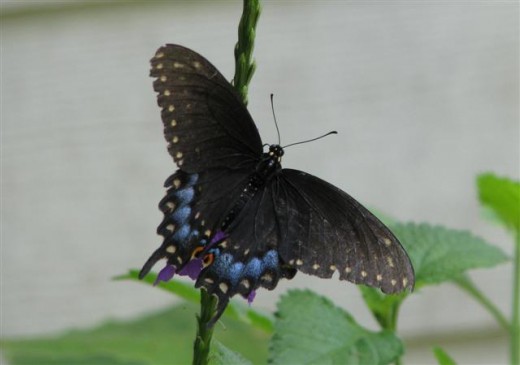
Laying Eggs
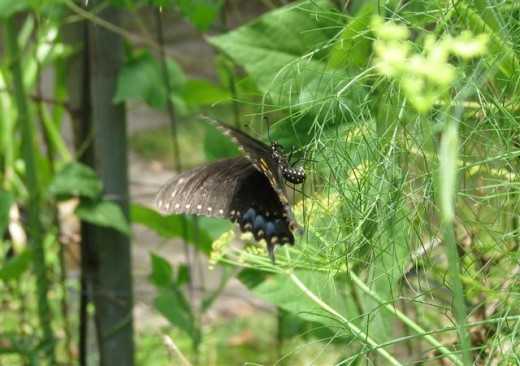
Caterpillars
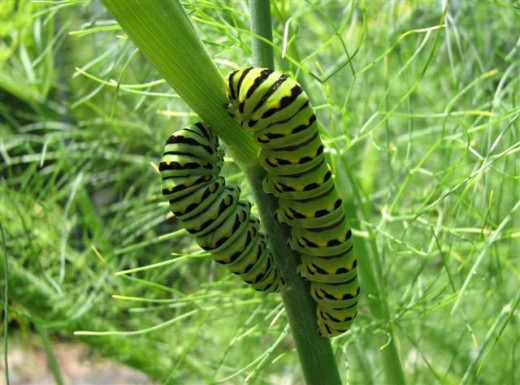
Chrysalis
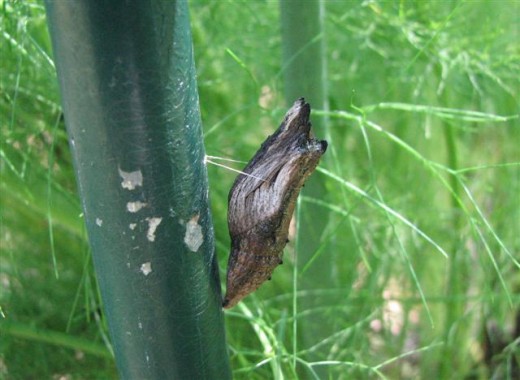
Butterfly Life Cycle
Female and Male Eastern Black Swallowtails are marked differently. The males have mostly black "shoulders" with a bright yellow band along the lower margin. In females the yellow band is reduced to small spots on the forewing and is replaced by blue scaling on the hindwing. This blue area makes them look similar to pipevine swallowtails and even spicebush.
If you see a black butterfly with blue scaling on the hindwing laying eggs on members of the parsley family (both wild and domesticated), dill or fennel, you can rest assured that it is an Eastern Black Swallowtail.
The eggs are cream colored and round. When they hatch in a few days, the caterpillars are so tiny and dark, that you can hardly see them.
As they grow, the green, yellow and black striping becomes more apparent.
Some butterfly gardeners who also enjoy parsley, dill and fennel will plant a patch just for the swallowtails in the back of the garden and move the caterpillars to that area. We usually just plant three times more than we can eat, so there will be enough for all.
If they are not eaten by a predator or picked off by a gardener, they form a chrysalis.
After a few weeks in the pupal stage, the chrysalis splits open and the butterfly emerges.
Home school teachers may want to plant a patch of parsley, dill and/or fennel and have their students make daily observations, recording when the eggs were laid. The size of the caterpillars from hatching to pupating, etc. Scientific observation is an important and useful learning skill.
Butterfly Life Cycle Books and Kits
Spicebush Swallowtail
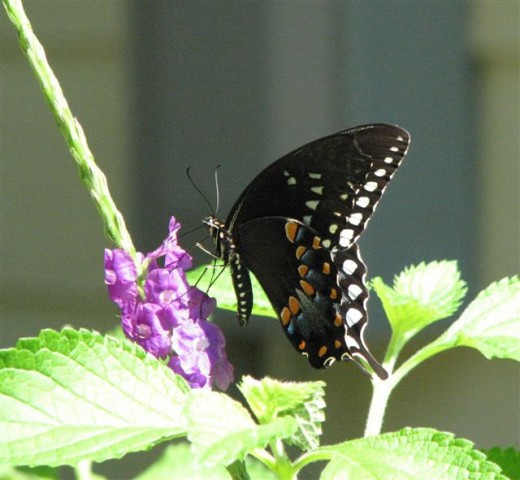
Pipevine Swallowtail on Vervain
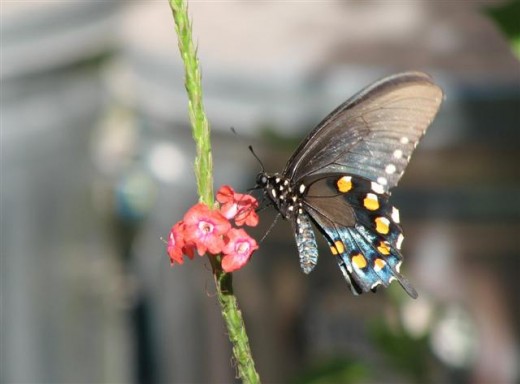
Other Blackish Swallowtails
The Spicebush Swallowtail (top picture) is often confused with black swallowtails. The best way to tell them apart is to look at the underside of the hind wings. The Spicebush has a blue scaling in a fan shaped pattern among the orange spots. The black swallowtail has a curved line of orange spots.
In addition, the larval food plants of the Spicebush include spicebush, sassafras and other laurels.
Pipevine swallowtails (bottom pictures) are also often confused with other black swallowtails. Again, a good way to tell the difference is to look at the underside of the hind wings. The orange spots are very large and more pronounced than the others. Also on the top side of the wings, the blue scaling covers more area and there are no yellow spots.
The larval food plant of the Pipevine are pipevines.
Click to buy Pipevine Swallowtail by naturegirl7 at Zazzle.com.
Black Swallowtail on Viola Flowers
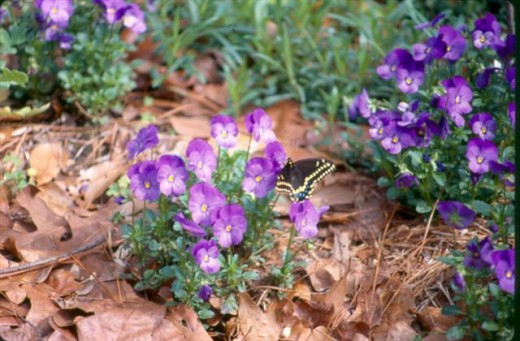
Plants that Attract Black Swallowtails
Black Swallowtail on Viola postcard by naturegirl7 on Zazzle.
Black Swallowtails will drink from many kinds of flowers. Native and old-fashioned types usually contain more nectar (and are easier to grow) so we stock our garden with such plants as Zinnias, Marigolds, Viola, Butterfly Bush, Butterfly Weed, Lantana, Salvia, Helianthus (sunflower family) and other composite flowers.
Host plants include Queen Anne's Lace, Carrots, Parsley, Dill, Fennel and other members of the parsley family. With the exception of Queen Anne's Lace which is poisonous to humans, the others are tasty additions to salads and other dishes. Make sure to plant enough for you and the butterflies.
Pipevine Swallowtail
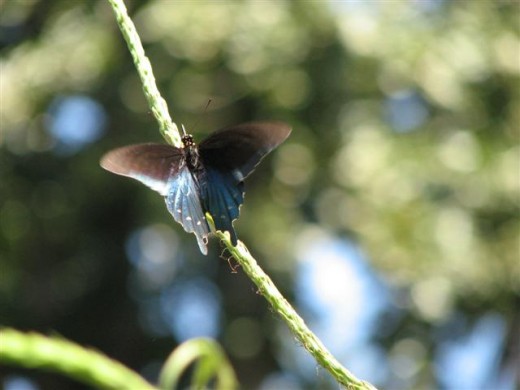
Butterfly Gardening Links
- Butterflies and Gardening to Attract Them
What is more beautiful than a garden full of colorful flowers with gorgeous butterflies flitting around? It's really not that hard to create a haven for these lovely insects right in your own yard. All you need to create this sanctuary for you and th - Herbs to attract Butterflies to your Garden
Two of my favorite things having to do with gardening are herbs and butterflies. What better way to get the benefit of both, than to plant some herbs that attract butterflies to your garden? Now is the...
Butterfly Field Guide

